Buried in a boneyard
Saving That’s All, Brother, the lead aircraft on D-Day
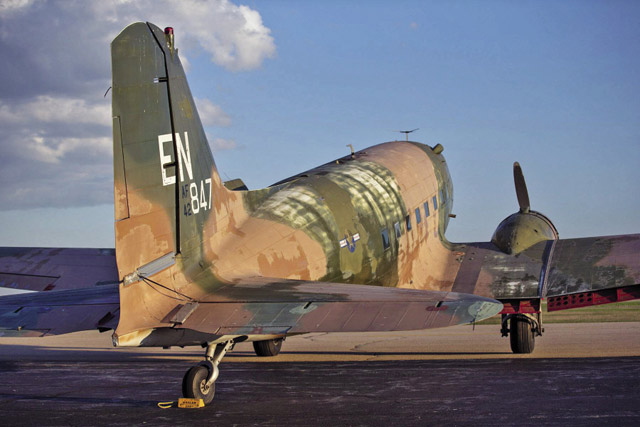
The Commemorative Air Force must raise money to complete the purchase of That’s All, Brother, and posted an appeal on Kickstarter to make it happen. As of this writing, the group had far surpassed the original $75,000 goal and were on track to make the full $250,000 cost of the restoration.
Late on the night of June 5, 1944, a Douglas C–47 Skytrain commanded by Lt. Col. John M. Donalson launched with 15 paratroopers of the 101st Airborne Division on board. They were the very tip of the Allied invasion spear, leading a formation of hundreds of aircraft carrying thousands of troops. Just after midnight on June 6, That’s All, Brother navigated through intense German fire and low clouds to drop the first Allied troops to land in Normandy, France, on D-Day, commencing Operation Overlord.
Cessna puts diesel 182 on hold
A purchase of 17 gasoline-engine Cessna 182T aircraft by the Civil Air Patrol signaled problems with the SMA-powered 182 JT-A development program that can’t be quickly solved. Aircraft on the production line slated for the 230-horsepower SMA SR305 engine were instead converted to the 227-horsepower Lycoming IO-540 engine. Cessna still hopes to deliver diesel-powered 182 JT-A aircraft in 2016.
Cessna officials also confirmed no new purchase agreements are being accepted for the 182 JT-A.
“I can confirm that the company is currently not taking new orders for the 182 JT-A,” said spokeswoman Lindsay Adrian. “Maintaining the relationship we have with our customers is of the utmost importance to us. Because certification has taken longer than expected, we are giving order holders options, including having their deposit returned.”
The SMA SR305 turbocharged engine sustained a turbocharger failure early in development that resulted in an off-airport landing of the test aircraft and was blamed on turbocharger parts that were drilled rather than machined. Dealers also indicate that the FAA has required the addition of a heated-air induction system that they say also led to problems. Some customers cancelled their 182 JT-A orders in favor of new Cirrus aircraft, and one purchased a used turbocharged Skylane.
Aircraft manufactured several months ago will get new tires and seals, said Gary Schneider, logistics manager for the Civil Air Patrol. Dealers have confirmed at least another half-dozen orders outside of those ordered by the CAP.
Deliveries of the 182T were to start in late July or early August. Cessna appears to be committed to offering a diesel-powered Skylane at some point in the future, according to Adrian. “Textron Aviation remains committed to innovation within the piston product line and to Jet A technology,” she said.
The 182 JT-A was to have had a base price of $530,000, while the 182T base price is $470,000. —Alton K. Marsh and Ian J. Twombly
Transponders on for taxi
If you have been flying a few years you may still turn your transponder off during taxi until just before takeoff. That’s changed. The FAA has reminded pilots that all that fancy new software in today’s control towers requires transponders to be on when in airport movement areas. That allows controllers to see your location on the airport using the new Airport Surface Surveillance Capability. It is a new capability coming with the changeover to the ADS-B system. —Alton K. Marsh
Continental Motors buys Danbury AeroSpace
Suddenly Continental Motors is a player in the flourishing Experimental aircraft market with its purchase of Danbury AeroSpace that includes Titan aircraft engines. Up to this time Continental has had “zero” participation in that important area, said Rhett Ross, director of Continental Motors and vice president of Aviation Industry Corporation of China (AVIC) International Corp., which owns Continental.
Danbury AeroSpace assets include Engine Components International, Precision Machined Parts, Airmotive Engineering Corporation, Aircooled Motors, Sterling Machinery and Process, and EC Services, located at its site in San Antonio, Texas, as well as the Titan brand of engines and parts.
Danbury AeroSpace offers its products under the brand Engine Components International (ECi), and has designed and manufactured components and engines since 1943. Its capabilities include PMA design and certification, engine design and certification, operation of a Part 145 repair station for piston aircraft engines and parts, manufacturing process design, manufacturing system design and production, and sales, service, and support. Titan makes a range of engines from 150 horsepower to 300 horsepower. They appear in a number of kit aircraft and helicopters.
Ross said the acquisition brings total Continental employees to 700 people. The purchase was to be closed by July.
This isn’t the end of acquisition news from Continental. There is interest in electric and hybrid aircraft, Ross said. There is also interest in a category he called “delivering greater value” to include electronic engine controls and expanded customer service. Diesel engines are a part of Continental’s future expansion as shown in the past acquisition of Thielert Aircraft Engines (now named Technify Motors) in Germany.
—Alton K. Marsh
Bell to lay off 1,100 employees
Bell Helicopter cut 1,100 jobs, layoffs that amount to more than 15 percent of the workforce. The Textron subsidiary, based in Fort Worth, Texas, cited declining production of the V–22 Osprey tilt-rotor aircraft and soft commercial demand for the move, the latest in a series of cutbacks.
Aviation analyst Brian Foley said the continued decline in crude oil prices also is contributing to Bell’s headwinds, because it softens demand for helicopters used in oil and gas production. Those helicopters are generally at the high end of the product line, and the soft oil market translates into delayed or canceled orders from petroleum companies.
Meanwhile, Foley noted one other factor that has made matters worse for Bell: The U.S. Army has decided to consolidate its helicopter fleet and sell off many highly capable Bell helicopters, including the OH–58 Kiowa—based on the Bell 206A Jet Ranger. That has given government and law enforcement agencies a low-cost alternative to purchasing new Bell models, Foley said.
Work on a new 82,300-square-foot facility in Louisiana for the Jet Ranger X will continue. Bell officials expect to meet production targets for it. —Jim Moore
Poland developing personal jet
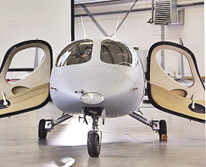 A Polish car-parts manufacturer is developing a five-seat Flaris Lar 01 personal jet that can land on grass runways and is trailerable when the wings and tail are removed. It is claimed to cruise at 380 knots true airspeed. The company said neither the word Flaris nor Lar mean anything; they are just brand names.
A Polish car-parts manufacturer is developing a five-seat Flaris Lar 01 personal jet that can land on grass runways and is trailerable when the wings and tail are removed. It is claimed to cruise at 380 knots true airspeed. The company said neither the word Flaris nor Lar mean anything; they are just brand names.
An airframe recovery parachute is housed in the aircraft’s nose. It is expected to have a stall speed of 62 knots indicated airspeed and a service ceiling of 46,000 feet, although its best cruise altitude is predicted to be 28,000 feet. It has not flown yet. When fully loaded, the 3,300-pound jet is claimed to have a range of 1,200 nautical miles. Its price has been estimated by the company as €2 million (on the day this was written, that was $2.2 million). The actual price is undetermined since negotiations with suppliers are not complete. It has a 28-foot wing and a 27-foot length.
It was developed by a family-owned company, Metal-Master, that claims to make parts for every European car maker. The company said in May there is no timetable for the first flight. “No time pressure in this case,” said Flaris Team member Maciej Peikert.
—Alton K. Marsh
Breitling Jet Team in Times Square
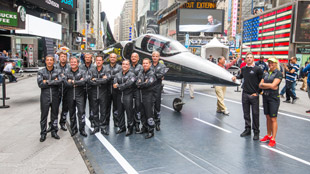
An L–39 ‘lands’ in downtown Manhattan
The Breitling Jet Team brought a full-size L–39C Albatross jet into New York City’s Times Square as part of its continuing American Tour. After a performance at New York’s Bethpage Airshow at Jones Beach, the team flew over the Statue of Liberty and the World Trade Center. Team leader and manager Jacques Bothelin said, “For a guy from France like me, being able to fly over the World Trade Center and then be here in Times Square with a jet and my team is a magical feeling. I really can’t believe it.” Also on hand were Breitling-sponsored golfers Morgan Hoffmann and Suzann Pettersen.
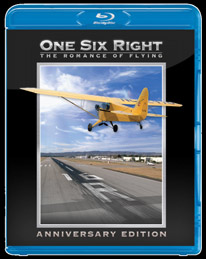 ‘One Six Right’ on bluray
‘One Six Right’ on bluray
Filmmaker Brian J. Terwilliger will mark the tenth anniversary of his groundbreaking general aviation documentary One Six Right with the November release of the remastered film in high definition on BluRay. One Six Right told the story of Van Nuys Airport and is narrated by actor and pilot Harrison Ford. Both One Six Right and the short film One Six Left will be on the single disc. (See “Unlocking the World” on page 92 for information on Terwilliger’s latest film, Living in the Age of Airplanes.)
Unbelievable view
Sweepstakes winners fly with AeroShell aerobatic team
“Unbelievable view. Fantastic aerobatics. Smooth, great job,” said Jeff Hove, describing his flight with the AeroShell Aerobatic Team at Sun ’n Fun International Fly-In and Expo in Lakeland, Florida. He was one of two pilots who won the AeroShell sweepstakes rides during EAA AirVenture Oshkosh 2014. Hove, a 29-year pilot and Cessna owner from Minnesota, and Chuck Kemp, a transplanted Texan living in Louisiana who recently rekindled his passion for flying, chose Sun ‘n Fun as the perfect time to enjoy their winning flights.
Kemp said that when he won the sweepstakes, “I was giddy. I attended A&P school 35 years ago with Steve Gustafson, the pilot of the #3 AeroShell aerobatic team aircraft. I flew with him then and now again today. It brought back some great memories and reminded me why I chose aviation as a career!”
Hove said, “I liked the formation wing-over. They’re difficult to get right, but they did it. It was great fun.”
AeroShell plans to offer more sweepstakes as part of its “Fly Above the Rest” campaign promoting the company’s full portfolio of piston engine oils, including the recently reformulated AeroShell Oil Sport Plus 4.
New engines may enter LSA market
Offers challenge to Rotax
By Alton K. Marsh
Most American pilots have never heard of LSA Engines GmbH, but neither had most U.S. pilots heard of a Rotax aircraft engine 10 years ago unless they rode a snowmobile or had flown in Europe. Now Rotax dominates the Light Sport aircraft (LSA) engine market. LSA-Engines managers in Berlin hope to challenge Rotax.
Starting in 2016 you’ll hear more about LSA-Engines models LSA850-105 and LSA850-130, which are engines of 105 horsepower and 130 horsepower. They will cost 12,850 euros and 18,750 euros, respectively. Based on a May 15 exchange rate, the 150-horsepower engine costs $14,500 and the 130-horsepower engine costs $21,250. Certification as an LSA engine won’t begin until 2016, but early deliveries may go to the Experimental market.
Consider this. They are basing their product on the Weber Motor MPE 850, and you’ll notice the “850” number is the same as in the LSA designation. OK, you haven’t heard of Weber Motor either. The Berlin company started in the automotive world and has facilities in the United States.
Weber does not serve the aviation market but cooperates with LSA-Engines by providing complete subassemblies. Each engine weighs 187 pounds in ready-to-run configuration. That includes a water cooler, intercooler, exhaust system, exhaust muffler, and all liquids. The engines don’t meet emission standards for roads, but the company is working on a future variant that will.
The MPE 850 is a two-cylinder, four-stroke engine of 850 cubic centimeters. MPE stands for multi-purpose engine. The company claims its four-stroke engine has a power-to-weight ratio similar to a two-stroke engine, but without typical disadvantages of high fuel consumption, pollution emissions, a short service life, and noise.
Email [email protected]
Corporate Angel founder enters hall of fame
Network has served 45,000 patients
By Jill W. Tallman
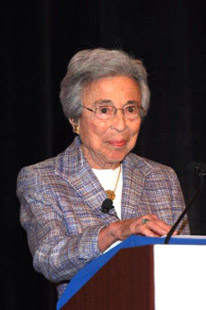 A general aviation pilot from New York helped to launch a charitable organization that has connected more than 45,000 cancer patients with seats aboard corporate aircraft that carried them to life-saving treatments.
A general aviation pilot from New York helped to launch a charitable organization that has connected more than 45,000 cancer patients with seats aboard corporate aircraft that carried them to life-saving treatments.
Priscilla “Pat” Blum and co-founder Jay Weinberg created the not-for-profit Corporate Angel Network in 1981. Blum was inducted into the Women in Aviation, International’s Pioneer Hall of Fame during WAI’s conference in Dallas.
Blum came from a flying family—her brother, Robert, was a U.S. Navy pilot who served in World War II and was killed in action off the coast of Africa. Her sister, the late Betty Haas Pfister, was a member of the Women Airforce Service Pilots.
“Twenty years later, after the war, I decided to take to the air,” she said. Blum and her husband, the late Roger Blum, took flying lessons after experiencing an excruciating traffic jam one summer. She became a private pilot in 1965 and earned an instrument rating in 1967. The Blums flew a Piper Comanche 250 that they kept at Westchester County Airport (HPN).
Blum was diagnosed with breast cancer in 1969 and underwent surgery. She recalled that her first words after the operation were, “When can I fly again?”
With an airplane based at Westchester County, Blum noticed numerous Learjets, Gulfstreams, and Challengers going in and out with only one or two passengers on board. “I’d often heard about the plight of cancer patients who couldn’t afford flights to life-saving treatments,” she said.
She reached out to fellow cancer survivor Weinberg with a plan to ask corporations if they would consider helping cancer patients fly to a treatment center if the corporate airplane and the patient were headed to the same destination on the same day. Together with another Westchester County-based friend, Leonard Greene, they contacted hundreds of chief executive officers and also sought support from aviation organizations, including AOPA, the General Aviation Manufacturers Association, and the National Business Aviation Association.
“I talked aviation speak to the flight departments to assure them that their operations wouldn’t be interrupted,” Blum said.
The first patient was flown on December 22, 1981. In the first year, CAN coordinated flights for 24 cancer patients. That figure has increased to more than 220 flights per month—about 3,000 per year—aboard aircraft owned by more than 500 volunteer corporations. There is no cost to the patient or the participating company, Blum said.
Patients who travel on CAN flights must be ambulatory and must be declared fit to fly by a physician. Each trip “provides hassle-free, comfortable travel with no long wait in an airport,” Blum said. Patients receive “the knowledge that strangers [are] offering help at a low point in their lives,” she said. “Having cancer is reason enough to find comfort and dignity.”
Email [email protected]
This month in aviation
August 8, 1908. Wilbur Wright makes his first test flight in Europe at Champs d’Auvours, France.
August 29, 1909. Glenn Curtiss wins speed tests in Reims, France.
August 1, 1911. Harriet Quimby is the first American woman to receive a U.S. Federation Aeronautique pilot’s license.
August 26, 1914. Igor Sikorsky flies the first four-engine aircraft, the Grand.
August 21, 1922. Lawrence Sperry drops landing gear from his airplane.
August 8-29, 1929. First round-the-world flight of a dirigible, the Graf Zeppelin.
August 24, 1939. First jet-powered flight—the Heinkel He 178.
August 6, 1945. The Enola Gay drops the first atomic bomb on Hiroshima, Japan.
August 12, 1946. President Truman establishes the National Air Museum at the Smithsonian Institution.
August 22, 1963. X-15 sets altitude record of 67 miles at 4,159 mph.
August 14, 1966. Orbiter 1 becomes the first U.S. spacecraft to orbit the moon.
August 20, 1975. Viking 1 orbiter and lander are launched to Mars.
August 30, 1984. First flight of the Space Shuttle Discovery.
August 13, 2013. SpaceX Grasshopper demonstrates successful vertical takeoff and landing.
Sponsored by Breitling
NOTICE OF ANNUAL MEETING OF MEMBERS
The annual meeting of the Members of the Aircraft Owners and Pilots Association will be held at 12 noon on Friday, September 11, 2015, at the headquarters of AOPA, 421 Aviation Way, Frederick, Maryland, 21701, located on the Frederick Municipal Airport (FDK), for the purpose of receiving reports and transacting such other business as may properly come before the meeting, specifically including the election of trustees.
If you are not able to attend but would like to appoint your voting proxy, please visit the website or call 800-872-2672.
—Kenneth M. Mead, Secretary
New chip and card provider
Aspen buys leading GPS chip distributor
By Thomas B. Haines
Aspen Avionics solidified its position as a major player in the general aviation avionics world with the acquisition on June 19 of GPS chip distributor Accord Technology, LLC (AT). With the acquisition, Aspen becomes one of only a small number of GPS chip and card providers in general aviation. Accord holds a worldwide exclusive license to sell the GPS sensors made by Accord India in the aviation market. Accord India’s NexNav GPS SBAS WAAS products include three key receivers, the NexNav Mini, NexNav Max and the NexNav Micro.
The chip sets are used in many different aviation product lines, including FreeFlight, which was recently prominently displayed on the Accord Technology website. Aspen President and CEO John Uczekaj told AOPA the products will continue to be made available to partners and competitors alike, in keeping with the Aspen philosophy of having an open marketplace.
Asked whether the acquisition might lead to a reduced cost for certified WAAS chips necessary for the FAA’s mandatory ADS-B Out solution, Uczekaj said, “It’s too early to comment but we’re well aware of the issue of cost as related to ADS-B.” Aspen is among several companies that have brought lower cost ADS-B solutions to the market in recent months as the 2020 equipage mandate looms.
The CEO said the acquisition from Accord India and AvValues LLC was a combination of equity and cash. Accord AT staff and resources based in Phoenix will be consolidated into a new Aspen office opening in that city. Aspen headquarters will remain in Albuquerque, according to Uczekaj. Accord will continue as a subsidiary of Aspen.
In addition to ADS-B growth, Uczekaj said the burgeoning unmanned aircraft systems market also holds great promise for the company and its GPS chips.
Email [email protected]
Perry joins CAP board
Brings strong focus on safety
 Air Safety Institute Senior Vice President and former Naval aviator George Perry has joined the Civil Air Patrol’s Board of Governors. With a diverse background in military and general aviation, Perry plans to help build on the organization’s traditions for safety innovation and ensure operational safety moving forward. He has led AOPA’s Air Safety Institute since 2014.
Air Safety Institute Senior Vice President and former Naval aviator George Perry has joined the Civil Air Patrol’s Board of Governors. With a diverse background in military and general aviation, Perry plans to help build on the organization’s traditions for safety innovation and ensure operational safety moving forward. He has led AOPA’s Air Safety Institute since 2014.
Perry learned to fly in a Cessna 152 as a teenager and stayed involved in GA through a 20-year career in the U.S. Navy. An F–18 and F–14 pilot and instructor with airline transport pilot, instrument instructor, and multiengine instructor certificates, he completed his Navy career as an F–18E squadron commanding officer and later joined Cirrus Aircraft as its director for fleet, government, and special mission sales.
Both AOPA and CAP, the official auxiliary of the U.S. Air Force, have a focus on safety and getting youth involved in aviation. Perry will bring his experience at the helm of ASI, which offers free education to pilots, to his work with the CAP.
“Proper training, a healthy respect for risk management and thorough preparation helps mitigate risks,” Perry said. “You can truly enjoy all the things that make life worth living if you do them safely.”
Members of the CAP perform continental U.S. inland search-and-rescue missions as well as homeland security, disaster relief, and drug interdiction missions, and serve as mentors to young people in cadet programs. —Sarah Deener
Latitude deliveries set
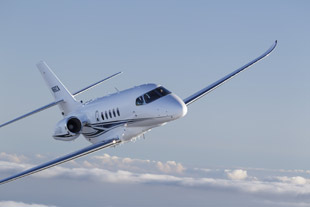 Cessna Aircraft Co. has announced that deliveries of the new Citation Latitude will begin in the third quarter, with FAA certification of the $16.25 million business jet now in place.
Cessna Aircraft Co. has announced that deliveries of the new Citation Latitude will begin in the third quarter, with FAA certification of the $16.25 million business jet now in place.
The Latitude is the first bizjet to offer a flat-floor, stand-up cabin in a midsize jet. It exceeded initial range projections during flight tests, proving capable of flying 2,850 nautical miles in long-range cruise, or 2,700 nm in high-speed cruise. Cessna also boasts that the Latitude’s operating costs are 20 percent lower than comparable aircraft. The Latitude can accommodate up to nine passengers, and adds to the list of new certifications Cessna has collected in the past 18 months, including four other Citation models. The Citation Longitude is expected to follow in 2017.
NetJets has ordered up to 150 Latitude jets with deliveries to begin in 2016, Cessna reported in the news release. More than 6,750 Citations have been delivered since the first Cessna Citation business jet entered service in 1972. Citations are the largest fleet of business jets in the world and have surpassed 31 million flight hours. —Jim Moore
View the video
Seven decades later, Staff Sgt. Matt Scales of the Alabama Air National Guard was researching Donalson’s story when he discovered the aircraft—serial number 42-92847—was in a boneyard, slated to be cut up and converted into a modern turboprop. Basler Turbo Conversions LLC of Oshkosh, alerted to the historic significance of the aircraft, put the brakes on that conversion, and ultimately struck a deal with the Commemorative Air Force, which plans to purchase and restore That’s All, Brother to airworthy condition, in detail just as it was on the day it led the Allied invasion.
“This is a modern miracle,” CAF President and CEO Stephan C. Brown said of the discovery. “The aircraft was within weeks of being torn apart.”
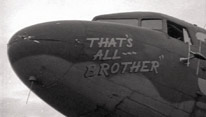 The C–47 chosen to lead the invasion was named by Donalson as a message to Adolf Hitler, though its D-Day paint scheme would be covered by subsequent owners—16 of them in all. It is currently painted as a Vietnam-era gunship, though it never flew such a mission. The CAF plans to meticulously restore the invasion stripes and other features in place when Donalson and his crew led the largest airborne assault in history. That’s All, Brother would return to Normandy on June 6 with a glider in tow, and also participated in Operation Market Garden, the relief of Bastogne during the Battle of the Bulge, and the crossing of the Rhine River.
The C–47 chosen to lead the invasion was named by Donalson as a message to Adolf Hitler, though its D-Day paint scheme would be covered by subsequent owners—16 of them in all. It is currently painted as a Vietnam-era gunship, though it never flew such a mission. The CAF plans to meticulously restore the invasion stripes and other features in place when Donalson and his crew led the largest airborne assault in history. That’s All, Brother would return to Normandy on June 6 with a glider in tow, and also participated in Operation Market Garden, the relief of Bastogne during the Battle of the Bulge, and the crossing of the Rhine River.
The CAF plans to base That’s All, Brother at the organization’s new national headquarters in Dallas, where it will become the star attraction and a “flying classroom,” the group seized in the news release, allowing school children and other visitors to board the aircraft and sit in the original paratrooper seats. Hidden speakers and other equipment will help re-create for each visitor the experience of that historic mission. The CAF also hopes to fly That’s All, Brother back to Europe in 2019 to participate in the seventy-fifth anniversary of D-Day.
Email [email protected]
View the video


